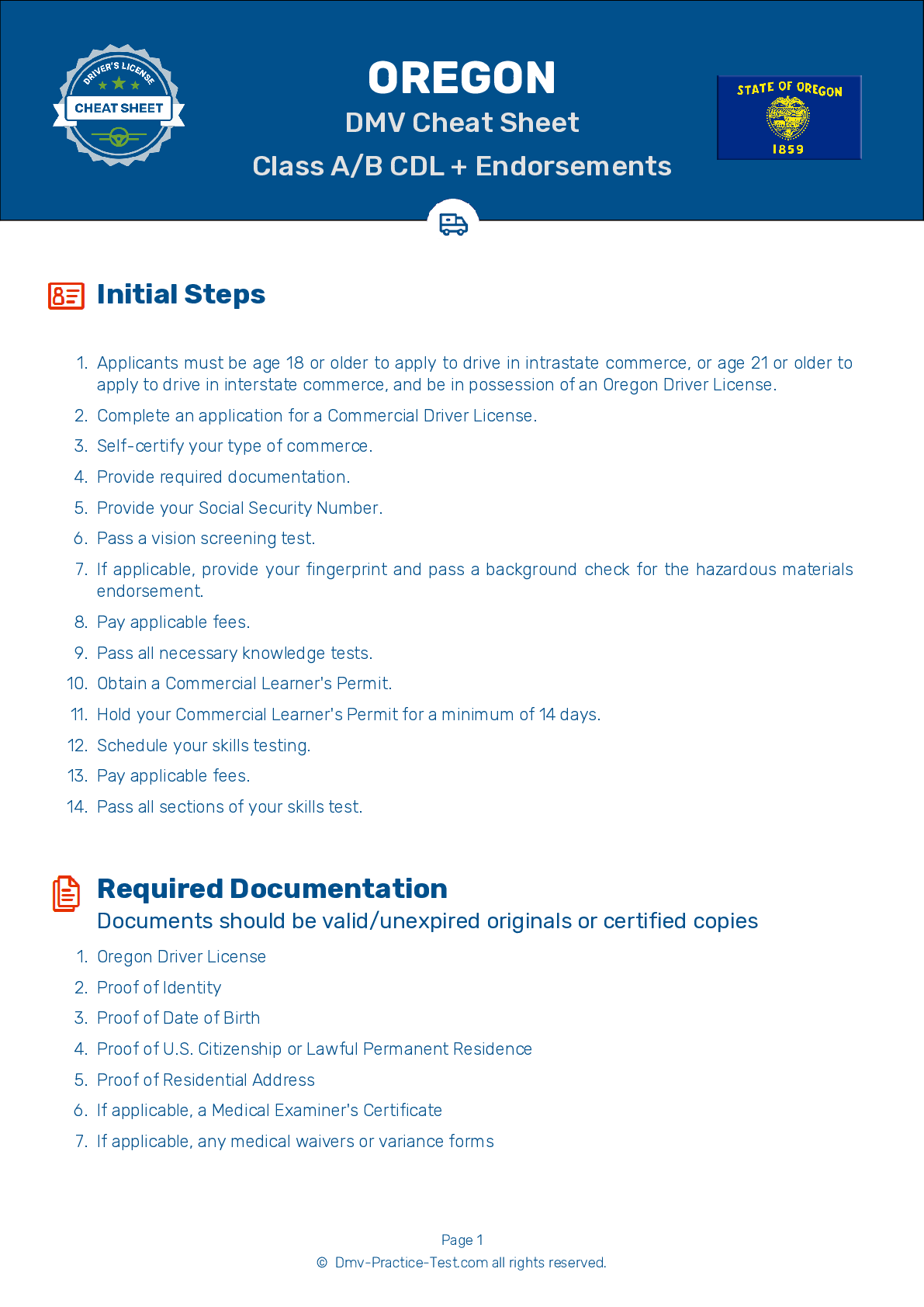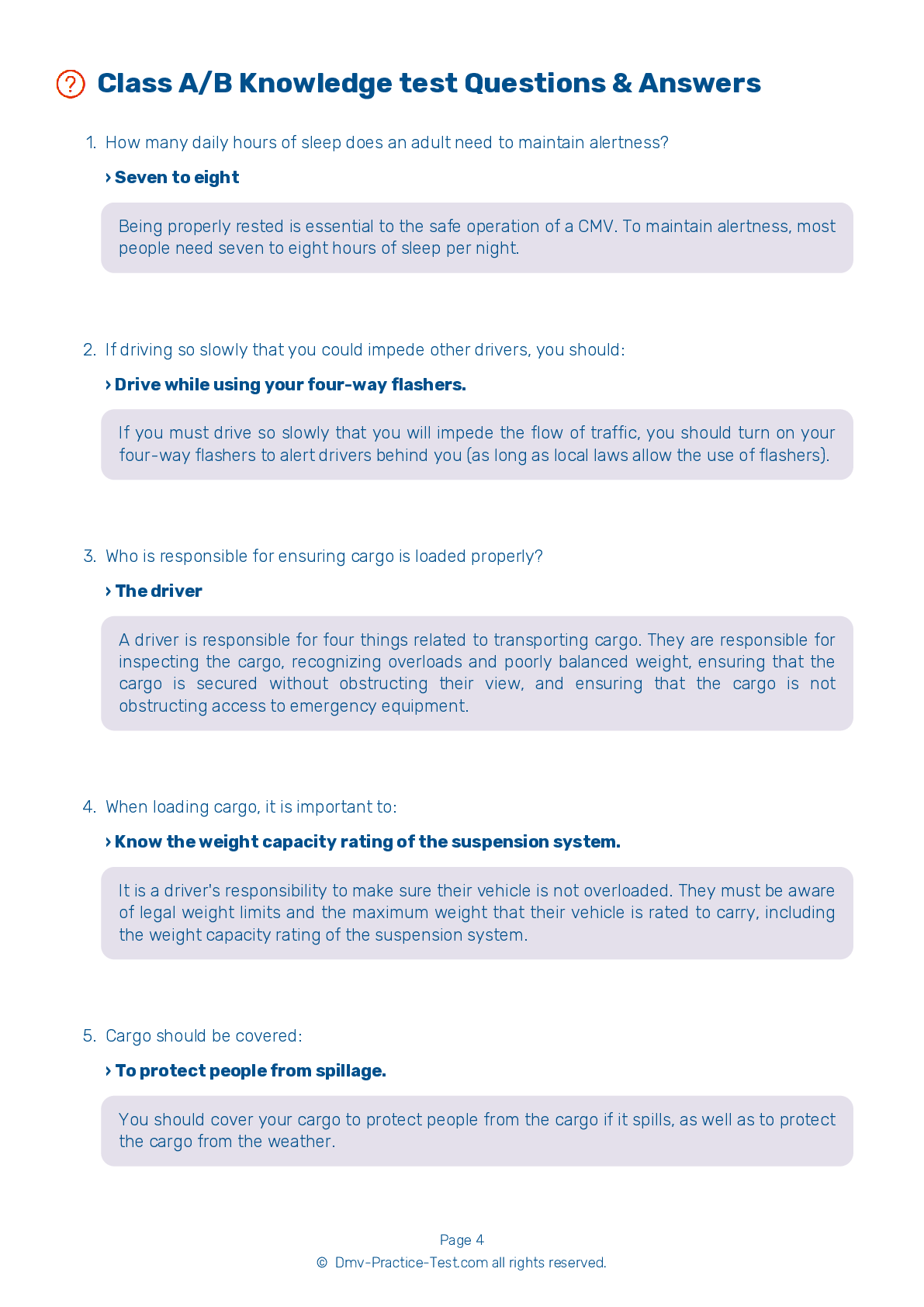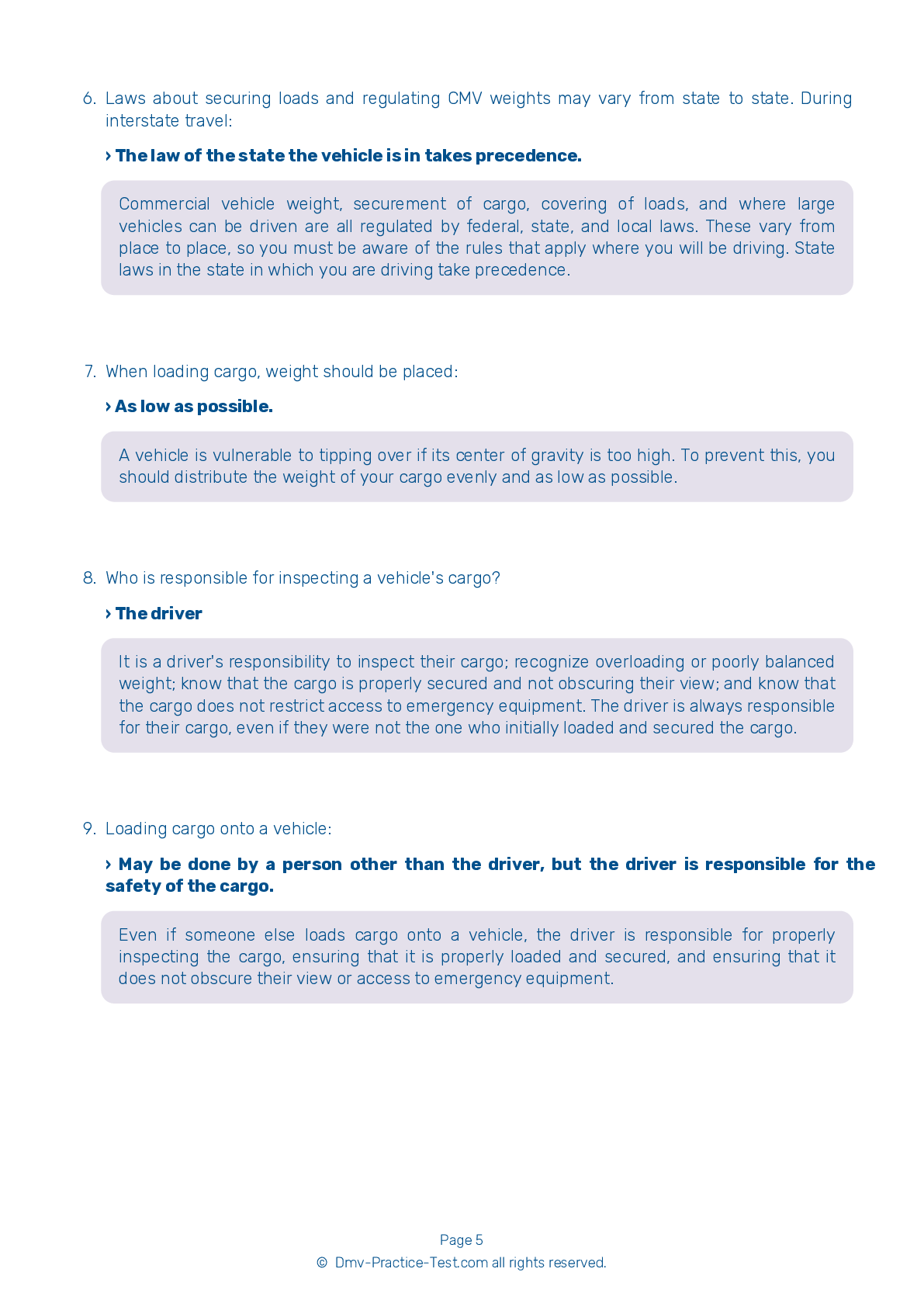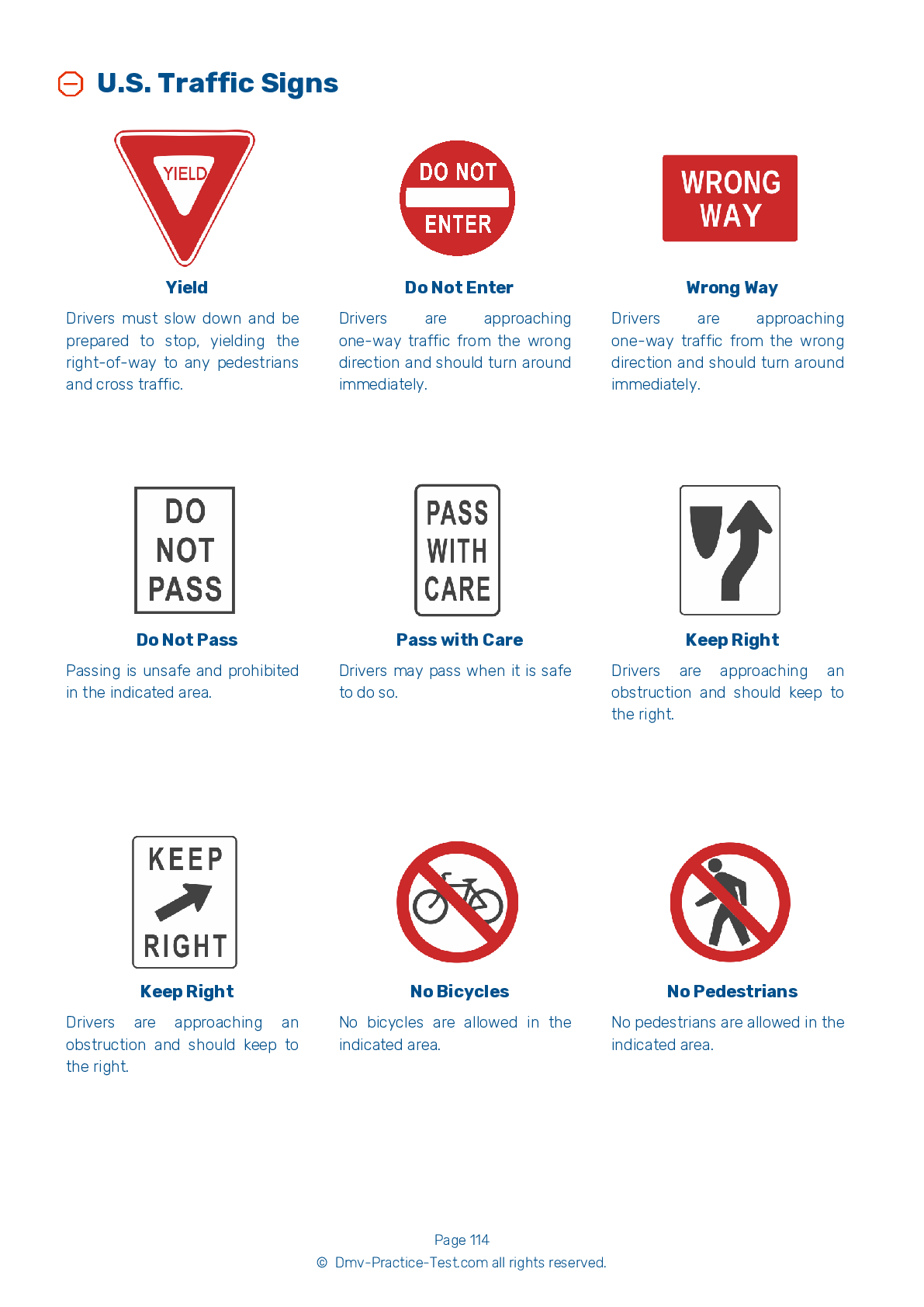Class B Driving Test | Oregon 2025 #2 Page 6 of 7
Train for FREE online with our Oregon class B license test. The official exam test consists of several obligatory parts, with all of them checking your knowledge of different blocks of road rules. If you need to obtain a OR CDL class B permit in 2025, practice as much as possible. Free sample tests published on our website will help you check and improve your knowledge and boost your grades. Please bear in mind that CDL class B requirements may vary from state to state.
36 . Who is responsible for the safe operation of a vehicle?
The person driving a vehicle is responsible for its safe operation. Be sure to perform routine vehicle inspections before operating a commercial motor vehicle.
37 . To make it easier to leave a parked position, you should park:
Backing is always dangerous and should be avoided whenever possible. When parking, look to park in a space that will allow you to pull forward when exiting.
38 . Which of the following is not an example of a distracted person that motorists should be worried about?
Drivers who are holding conversations with others may not be paying full attention to the road and may make unsafe moves. Children do not always pay attention to traffic and may dart into the road without looking. Exercise caution when driving near road workers. This helps to keep the workers and other distracted drivers safe.
39 . When checking tire condition during the vehicle inspection, you should:
When examining your tires during the vehicle inspection test, you should ensure that treads are evenly worn.
40 . When backing with a trailer, you should begin by:
When backing with a trailer, begin by turning the steering wheel in the direction opposite of the turn. Once the trailer starts to turn, reverse the direction of the steering wheel to follow the trailer.
41 . When approaching a curve during the on-road driving test, you must do all of the following, except:
When approaching a curve during the on-road driving test, you should thoroughly check traffic in all directions. Before entering the curve, reduce your speed sufficiently so that further braking or shifting is not required. Keep your vehicle in its lane and continue checking traffic in all directions.
42 . A vehicle must be equipped with all of the following, except:
All commercial motor vehicles are required to be equipped with the proper emergency equipment. This may include spare electrical fuses; three red reflective triangles, six fuses, or three liquid burning flares; and at least one properly charged and rated fire extinguisher.
See the exact questions that will be on the 2025 Oregon DMV exam.
99.2% of people who use the cheat sheet pass the FIRST TIME
Lillian MCcranie explains how our CDL study guide was helpful in passing the exam and recommends it to everyone.
Cameron tells us how he purchased the CDL exam, and found it to be a useful tool which helped him pass the exam and find a job.



